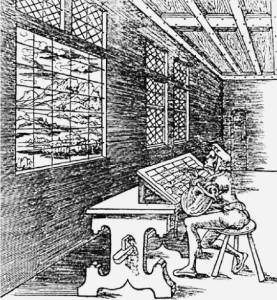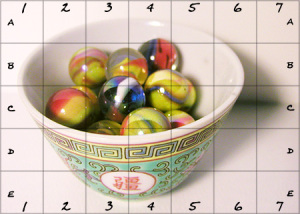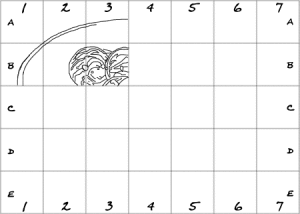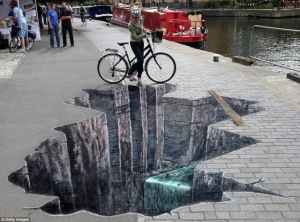Chapter 5: Perspective
This chapter seeks to discover the relationship between visual and verbal in New Media (but only as appropriate, for books have been written on the subject). Brooke wants to move style out of “ecology of code” and into “ecology of practice” (114).
Brooke claims that “our field needs to resist the tendency to collect nonverbal media under the banner of literacy” (114). I agree, but shouldn’t we also resist calling databases rhetoric?
Understanding (Visual) Rhetoric
Mary Hocks “identifies three such [rhetorical] features [of digital media] – audience stance, transparency, and hybridity” yet Brooke claims that “this kind of analysis has its roots in a technologically specific version of rhetoric” (115). What exactly is this “technologically specific version”? What does it look like or require of us?
Hocks also says “that ‘Any rhetorical theory works as a dynamic system of strategies employed for creating, reacting to, and receiving meaning’ (p. 632)” (116). Brooke challenges the perspective of style being “reception” because “this model of style allows others’ conscious choices to be deciphered, documented, and decontextualized” (116). But I argue that we do need some way of explaining (some criteria, if you will) what makes proper writing (i.e. what style is acceptable).
I absolutely love this quote from Paul Ricoeur (1977) because it underscores my own perception of rhetoric: “‘Indeed, since the Greeks, rhetoric diminished bit by bit to a theory of style by cutting itself off from the two parts that generated it, the theories of argumentation and of composition. Then, in turn, the theory of style shrank to a classification of figures of speech, and this is a theory of tropes.’ (p. 45)” (117). Although this statement’s focus is intended to be on style, I immediately saw the two pillars (argumentation and composition) that I keep focusing on in my own understanding of what constitutes rhetoric. I feel so much better (even if this guy was writing 40 years ago!).
When discussing the responsibility of the user not to mislead people, Brooke turns ethos into “appropriateness” (118). I suppose it works, but he missed an opportunity to really nail this concept; the user is bound to be ethical in his use of terminology. Brooke’s focus instead is on Aristotle’s distancing of “language and its users” (118), reminding us of Aristotle’s preference for “ordinary” language instead of the metaphors that “poetic” language uses. Such a preference does help narrow the possible meanings of any given text, but metaphors keep writing fresh.
The Emergence of Perspective
Rhetoric has declined? It began declining with Aristotle? I thought it was created (or at least organized) with Aristotle.
According to Brooke, Aristotle’s descriptions and actions result in a “distanced, analytical perspective” (120). How do the differences between his culture and our present-day culture affect this perspective? Of course, the fact that the spoken word needs to be preserved via writing plays a large role in being able to scrutinize the arguments on a grand scale. We have many more opportunities to view written text than I imagine they did during Aristotle’s time.
Perspective: “a method for displaying three-dimensional objects and/or scenes on a two-dimensional space” (120).
Our eyes have been disciplined to decipher text, including such “standardizations” like “margins, spaces between words,” etc. (121). We don’t even think about such things anymore until someone reminds us that wecanbunchallourwordstogetherandstillcommunicate. The conversation here involves the fact that when we are reading, we don’t notice what the letters look like; instead, we focus on the meaning being conveyed through the translation of those letters into ideas that we can understand. This will later be described as looking at/through.
Do I buy the concept that “verbal style is commonly conceived as a property of a written text” (122)? “Property” as in ownership or “property” as in a characteristic?
Brooke wants us to understand “how the practice of style has come to be defined in a range of domains” so we can see, as James Elkins does, “the practice of perspective” (123).
An Old Perspective on Metaphor
Aristotle warns against the metaphor but Nietzsche says there is “no real knowing apart from metaphor” (qtd. in Brooke 123). But who is right? My simple brain needs the concrete analogy to understand many (most) complex ideas.
Nietzsche from “On Truth and Lies in a Nonmoral Sense” defines truth: “A moveable host of metaphors, metonymies, and anthropomorphisms: in short, a sum of human relations which have been poetically and rhetorically intensified, transferred, and embellished, and which, after long usage, seem to a people to be fixed, canonical, and binding” (124). Brooke also sums up this argument with the comment that “[t]here is no particular privilege accorded to a so-called proper name” (124) which coincides with the “artist formerly known as Prince.” The concept Nietzsche advocates goes against most Christians’ concept of the power of words as evidenced by God “speaking” the world into existence and the reference to logos in John 1:1: “In the beginning was the word, and the word was with God, and the word was God.” Yes, perception does create its own sense of truth in someone’s life, but removing all Truth from all concepts throws everything, even existence into question.
I like the focus that Ricoeur places on Aristotle’s discussion of metaphor since it (metaphor) helps the abstract become (or seem) concrete (Aristotle says it “‘sets the scene before our eyes’ (1410 b 33)”) (125). That’s the way I see it (ha! No pun intended).
Brooke wants us to “unlearn the habits of thought and expression developed for that [communication] landscape” (127). How is that possible when we think via words? If we rely only on images, we are left with mostly emotion; in order to think, we need words.
Derrida’s description of “writing” is too inclusive (128); what he is describing encompasses communication overall, not writing. We can communicate via body language, but that is not the same as writing. The same should be true of rhetoric; it should apply to argument, not to just any form of communication.
Deconstruction explained a little: “the binary between speech and the more narrow, technologically specific form of writing, a binary on which an entire metaphysics of presence is constructed in Western philosophy” (128). Providing “broader definitions” of anything invites trouble. Look at how the gay and lesbian community is trying to redefine marriage. Instead of changing the definition, why not create new terms that are specific to gay and lesbian couples? Doing so helps to alleviate confusion, so I don’t misunderstand the term husband or wife and try to place it in the wrong context. The spouse of a gay man would be a different term instead of husband and the spouse of a lesbian would be a different term other than wife. How hard is that? Brooke needs to do the same thing instead of trying to cram all his ideas into the rhetorical situation.
Derrida (accurately?) describes the progression from thought to speech to writing (129) but all of them require the CODE of language.
Kristie Fleckenstein claims that “meaning shapes itself” (130) but doesn’t she give too much power to meaning itself? Those who use words determine its meaning. If I suddenly begin calling something by a different name, I have to somehow explain that switch to others or communication is lost.
Will Brooke ever get to his final point in this quest? Now he says that a term such as “literacy or literacies” will not be able to “‘support the weight of the shifting, contingent activities we have been describing’ (p. 366).” So what does he propose exactly?
Interfacial Perspectives
Discussion along the lines of the book Windows and Mirrors by Jay David Bolter and Diane Gromala (2005): the ability to both look at text and to look through it. I don’t see how turning the written word into something digital changes whether we look at or through the words. Brooke says it depends on how comfortable one feels with the interface, so the key is where we look from (perspective). He then uses the differing levels of video games and how the backgrounds change to support this discussion of perspective; the more comfortable a player becomes with the landscape, the more the player can handle more difficult landscapes.
Chapter 6: Persistence
Brooke says memory belongs in the canon of practice. Memory cannot be relegated to merely data storage (143) but must be seen as “construction of pattern” (144). It breaks free from any binaries associated with it.
Memory as Presence/Absence
Summarized: “The binary of presence/absence reduces memory to a question of storage, with little thought given to the effects that various media might have on what is being remembered. Over the past century, we have begun to inch away from this legacy, considering not only whether we remember, but how we remember as well” (147-48).
Memory as Pattern/Randomness
Seeing memory as “spatial” indicates storage (how we usually view memory); switching memory to “chronological” indicates the practice of using it through “the construction (and dissolution) of patterns over time” – [persistence] (151). But is Brooke simply trying to rename learning? How are memory and learning different? Memory implies mere recall; learning implies the practice Brooke is looking for.
Persistence of Cognition
Storage indicates “the law of diminishing returns” when the file cabinet gets too full (151). Brooke does not completely negate memory as storage but he wants us to see it more as persistence (continued practice). He claims that “persistence marks a play between presence and absence” (157). As patterns build upon themselves, we remember things. I suppose learning “marks a play between presence and absence” as well, right?
Presence and Persistence in New Media
Tagclouds can serve as a type of memory (data storage – well storage about usage, actually) (164).
“We take in information, sometimes without being aware of it, and only notice it when that information connects with other data to form a pattern worth investigating” (166). In How Learning Works (Ambrose, Bridges, DiPietro, Lovett 2010), one of the concepts that is advocated is creating an environment in which students can make those connections. The tricky part is knowing where students are coming from to begin with – where to make that first link.
Chapter 7: Performance
Brooke takes the canon of delivery and considers it performance. As Richard Lunham indicates, it is not to be seen as merely a package that can be thrown in the trash; instead, it must be used (170), but even this explanation is lacking. This definition sounds like learning, too.
According to Brooke, the canon of delivery need not “be either performative or transitive” but we must see the performance of delivery in order to grasp his concept of New Media (171).
Delivery as Circulation, Medium
Note to self: P2P = peer to peer; f2f = face to face
Considering a Marxist perspective, in what ways is New Media considered a commodity? What is the “ratio between use value and exchange value” (in terms of Napster, etc.)? (173-74).
Welch says we should be thinking of delivery as medium (174), yet Brooke points out that such an idea requires a divorce between form and content, which is something she opposes (175). Combining Welch’s notion of delivery as medium with Tumber’s notion of circulation fits Brooke’s idea of performance (175).
To Deliver: An Intransitive Canon?
(Play on words from Barthes’s “To Write: An Intransitive Verb?”)
“Particularly in the case of delivery, we must consciously resist the impulse to reduce that canon to a transitive, instrumental process of transmission” (177).
- Lanham’s “Weak Defense”: Good and bad rhetoric, depending on its cause
- Lanham’s “Strong Defense”: “assumes that truth is determined by social dramas, some more formal than others but all man-made. Rhetoric in such a world is not ornamental but determinative, essentially creative. Truth once created in this way becomes referential, as in legal precedent. . . . The Strong Defense implies a figure/ground shift between philosophy and rhetoric (p. 156)” (179).
- I don’t get this strong definition. Brooke connects it to looking at / through. “[T]he proof of its value does not rest with some a priori [theoretical rather than empirical] content, but rather in the performance” (179).
Such a relationship places the canon of delivery “at the center of the relationship between identity and discourse” (179).
- Technology as weak: that which liberates or oppresses.
- Technology as strong: viewing the technology as an interface and not as an object (180).
Brooke refutes Lurie’s argument saying that the medium cannot be judged as bad (180), but this does not hold up when considering the “medium” of lecture – we all agree it is bad.
Delivery must be seen as “both practice and performance” (181).
Delivery as Performance
How to determine the credibility of a web site, especially if the authors will not disclose their real names for fear of retaliation from their workplace? Does the previous work of a blogger constitute enough credibility?
Warnick’s concept of “distributed credibility” looks at “skillful design, image quality, usability, information structure, comprehensiveness, absence of self interest, usefulness . . . it is the quality of the performance that counts” (184), but the shiniest of red wagons – all bedazzled and whatnot – will still stink if carrying dung. We cannot divorce content from form, for they both bear messages.
Regarding his opinion that Wikipedia should not be viewed as a place to locate definitive answers but a place to discover (191), that’s all well and good as long as EVERYONE using the cite realizes that its purpose is to facilitate discovery, which is not the current perception. Until creators and users are all on the same page regarding the site’s intent, we can’t make this assumption.
Vershbow’s suggestion that “accuracy is in some ways beside the point” (191) is to be expected when a group of people buy into the fallacy that there is no truth, as Barthes and Derrida propose.
Discourse Ex Machina, A Coda
Brooke suggests that we use the classical rhetoric canons and the trivium as axes, so if we create the x- and y-axes, we can plot our rhetorical theory for technology. But this still leaves us with many non-answers. If he wanted us to view his theory this way, he should have visualized it for us and explained it fully.
Bottom line: he failed to establish a new rhetoric for viewing New Media.
The Design of Web 2.0 by Kristin L. Arola
Arola sees “the Web as platform, the Web as participation, and the Web as collaboration” (5). Such thinking translates into Brooke’s discussion of interface, the ecology of practice, and delivery as performance, respectively.
She argues that merely adding text and images into a template constitutes our only having control over content; the template-makers are monopolizing form (6) — and we allow – even want – them to.
Arola wants us to encourage our students not only to look through the Web interface but to look at it as well (7). She follows this up with suggestions to get our students thinking about how design conveys meaning.
I commented on Sarah Camp‘s blog successfully; I tried to comment on Shantal’s blog, but I could not get the Profile dropdown to accept my WordPress identity, so I gave up and commented on another classmate with a WordPress blog: Sherie Mungo.
From Sara’s Week 5 notes, I found myself enthralled not only by what she said (looking THROUGH), but also by how she visually supported what she said (looking AT). The concept of boundaries as it applies to her own students became a necessity for her as she worked (and continues to do so) to keep costs down for her students by offering digital content instead of forcing them to purchase additional textbooks. Because she encourages her students to locate their own “texts” online, she has provided them with boundaries to keep them focused. Such boundaries require her students to critically review their chosen texts for accuracy, reliability, credibility – all the critical thinking skills that we are hoping to train our students to use.
Sara’s site also reminded me of the importance of images for adding not only additional meaning to the verbal texts, but for adding the not-often-referenced (at least not in our reading thus far this fall) emotive side of meaning. Sarah and I had a nice discussion regarding the emotions that one of her images brought out of us. Because we have had different life experiences, the image that I saw as positive and motivating, she saw as painful and somewhat restrictive. Mere text would not have produced such a talking point; then again, without our commenting “texts,” we would not have realized the differences we had, either. Images without text can be just as limiting as text without images.
Sherie’s thoughts resonate with many of my own, which is why I enjoy reading what she has to say. Her focus on doing style instead of merely having a style, coupled with her references to the fur-wrapped Joe Namath, cause me to think deeper. The visual image she provided for me of Namath swagging in his fur coat helped me stop and dwell on the concept of style more so than Brooke did. She created a metaphor for me, and those concrete images are what keep me going in this deep sea of theory. Sherie also questioned the concept of an overabundance of “literacies” which reminded me of something Shentel said in her own blog about the rhetoric of needlepoint. I’m not yet at the point where I am willing to accept almost anything as rhetoric, but in my defense, I did sign up for a Workshop at this spring’s 4C’s which looks at how DIY projects can be viewed as rhetoric, so I am willing to have someone challenge my thinking!
I also learned from both these ladies that I need to step up my game on the blog instead of merely posting my notes in raw form; I have to move from analysis to full synthesis (ugh, more work!), but alas, I realize such steps are good for me. My brain wants me to think it needs rest after a week of working with freshmen and grad students and reading theory, but in reality it needs to do more workouts to build its stamina. Mental treadmill, here I come!

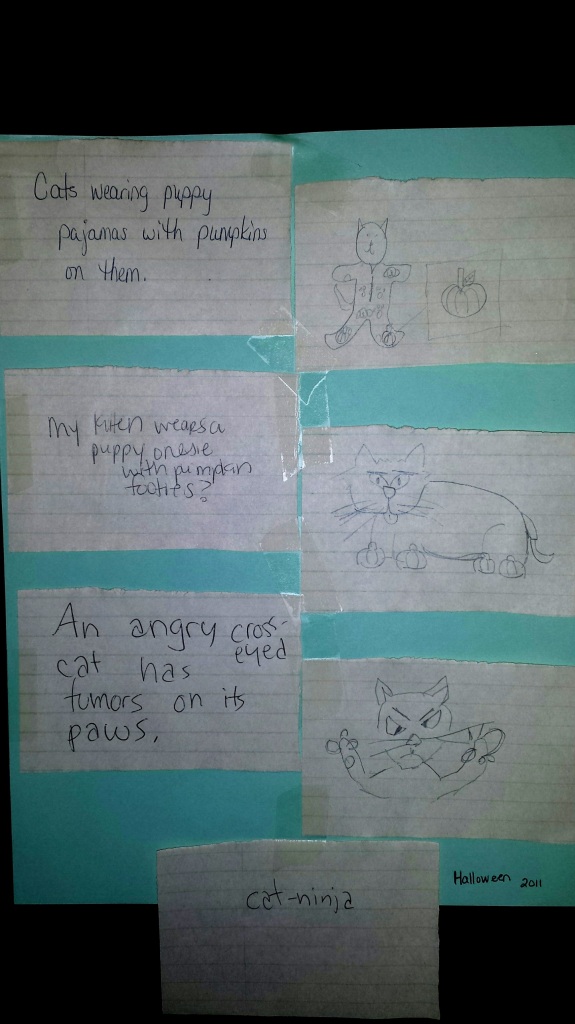
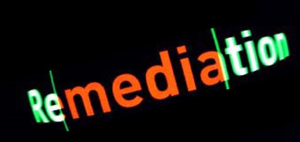
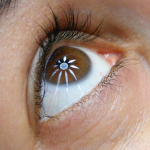

 Perspective
Perspective

